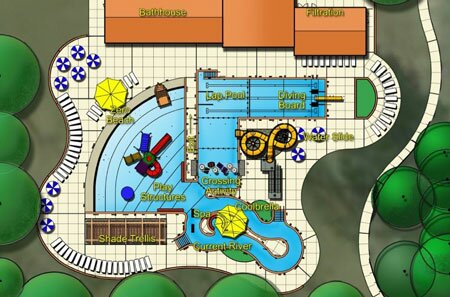ONARCHITECTURE- Helter shelter: Arch students make $10 homes

Modeled after a Conestoga Wagon, this 10-dollar shelter was made out of strips of plastic tarp, grocery bags, and wire mesh.
PHOTO COURTESY JOHN QUALE
Recently, about a dozen UVA students found themselves sleeping out in their professor's back yard in temporary shelters made out of cans and cardboard. A clever new UVA housing option? A punishment for violating the Honor Code?
Actually, it was a legitimate design-build contest, which had UVA architecture, engineering, and environmental science students building five temporary shelters out of recycled and reclaimed materials in preparation for ecoMOD4, the award-winning design series that aims to prove that prefabricated houses can be attractive, well-built, enviromentally friendly, and affordable. Indeed, talk about affordable housing– students were only allowed to spend $10 on their shelter, had to put it up in less than two hours, and the entire structure had to be broken down and recycled the next day.
"It was a way to build teamwork and get our hands dirty as we start ecoMOD4," says architecture Professor John Quale, director of the ecoMod projects, who offered up his back yard to the designing vagabonds. Quale describes one shelter made entirely of newspapers and aluminum cans cut up to make a roofing material, others that used bamboo or reclaimed plastic bags and sheathing ironed together to make an exterior skin, and one that was a geodesic dome made out of reclaimed cardboard from boxes.
Using the most commonly recycled items at UVA– newspapers and aluminum cans– architecture majors Katie Stranix and Clare van Montfrans built a shelter they called "roll reversal."
They rolled up newspapers to make structural columns and unrolled aluminum cans to form roof shingles. The newspaper, says Stranix, went from flimsy to firm, and served as the structure of the shelter. The cans were flattened and joined to repel water and serve as the roof.
"By reversing the roles and characteristics of the materials," says Stranix, " we were able to sucessfully complete the role, or roll, reversal we intended."
Other newspapers were used for wall elements, such as bricks and shingle-like siding. they also used rolls of duct tape and several steel stakes for structural reinforcement.
The only unusual thing that happened, says Stranix, was that their "doors," made of the left-over can bottoms held together by duct tape, began to fall apart because of the high humidity that evening. Other than that, she says, the structure held up.
Architecture students James Perakis and Melissa Pancurak say the idea for their shelter, "hoodie," came to them when they happened upon an image of a Conestoga Wagon.
"The wagon was really a great precedent all around since it was affordable, mobile, and reclaimable, and the way the canvas covered the rear opening was great," says Perakis. In the end, however, they departed from the Conestoga theme when they decided their prairie wagon made out of strips of plastic tarp, grocery bags, and wire mesh looked more like a giant "hoodie."
"We were a little dissapointed with the humidity inside the shelter, despite the rooftop air vent and the ground level openings," says Perakis, " but we were pleased by how fast the whole thing could be put together."
Indeed, the "hoodie" ended up winning the sleep-over contest.
"The challenge of designing a temporary shelter and building it using recycled materials forced us to consider a broad range of issues such as materiality, structural stability, and construction," says Perakis. "I think our group learned a lot about the different roles materials play in the performance of a building."

Using the most commonly recycled items at UVA– newspapers and aluminum cans–architecture majors Katie Stranix and van Montfrans built a shelter they called "roll reversal."
PHOTO COURTESY JOHN QUALE
Onesty Pool demo begins
The Onesty Pool and bath house at Meade Park was demolished Monday September 22, making way for the complex's $3.8 million replacement. From the looks of the final design plan (pictured ), prepared by Kimley-Horn & Associates, folks over on that side of town are going to have their own "water fun park." In addition to new trails, playgrounds, and fields on the 5.6-acre tract of land along Chesapeake Street, the Meade Park project will include a new pool complex with a large spiral water slide, a lap pool, a "lazy river," a "Coolbrella," a spa, an assortment of play structures in the water, and a "Zero Depth" entry "beach."

What the new Onesty Pool at Meade Park will look like.
Kimley-Horn & Associates

A trackhoe takes down Onesty Pool and bath house at Meade Park, which opened to the public in 1975 and was named in honor of Louis A. Onesty, known as the "Father of Swimming" for his work promoting swimming programs for area youth.
PHOTO BY TOM DALY
#